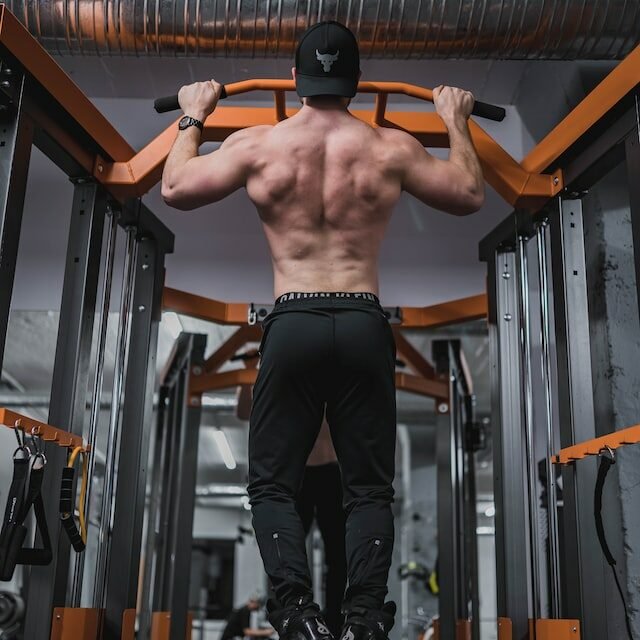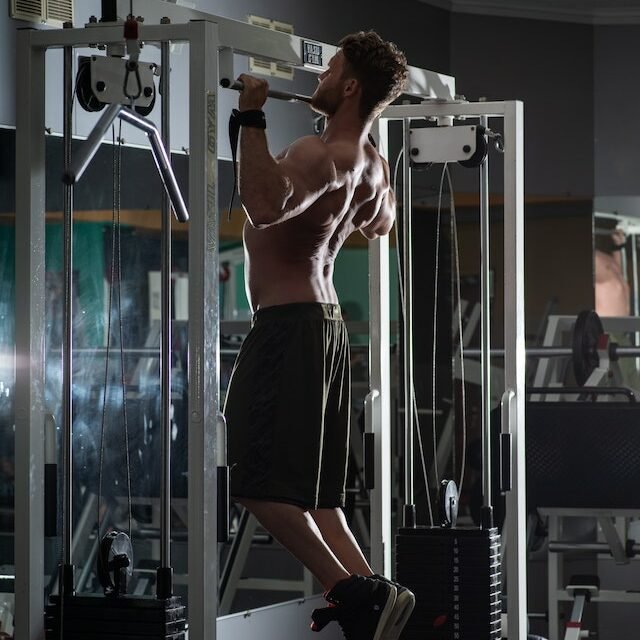
Why Are My Pull Ups Not Improving? Solutions For Consistent Improvement
You may have noticed recently that your pull ups aren’t improving the way you had hoped.
This leaves you asking “why are my pull ups not improving”
If you’re struggling to improve your pull-up performance, don’t despair. There are a few key things that you can do to start seeing some progress.
It can be frustrating when you feel like you’re stuck on a plateau, but by following these simple tips, you’ll be on your way to pull-up success in no time.
Why are my pull ups not improving?
There are a few key reasons why your pull ups might not be improving. First, make sure that you’re using proper form. If your form is off, you won’t be able to maximize your effort and will likely see little to no improvement. Secondly, consider how often you’re practising pull-ups. If you’re only doing them once in a while, you’re not giving your body the chance to adapt and improve. Finally, make sure that you’re gradually increasing the difficulty of your pull-ups. If you’re doing the same easy variations all the time, you won’t see much progress. Try adding weight, changing grip, or using different pulling motions to mix things up and challenge your body. With a little bit of effort, you should start seeing some improvements in your pull-up performance.
What are your goals?
If you’re wondering why your pull ups aren’t improving, it’s important to first consider what your goals are.
Are you trying to increase the number of pull-ups you can do in a row? Are you trying to increase the weight you can lift? Or are you simply trying to improve your overall pull-up strength?
Depending on your goals, you may need to adjust your approach.
If your goal is to increase the number of pull-ups you can do in a row, make sure you’re giving yourself enough rest between sets. If you’re doing multiple sets of pull-ups, make sure you’re giving yourself enough time to recover between each set. Try increasing the number of sets you’re doing, or the amount of time you rest between sets.
If your goal is to increase the weight you can lift, you may need to adjust your grip or add weight to your pull-ups. Adding weight will make the exercise more challenging and force your muscles to work harder. If you’re not sure how to add weight safely, talk to a certified personal trainer or coach.
If your goal is simply to improve your overall pull-up strength, focus on gradually increasing the difficulty of your pull-ups. This can be done by adding weight, changing grip, or using different pulling motions. By gradually increasing the difficulty, you’ll give your muscles the chance to adapt and get stronger.
With a little bit of effort, you should be able to see some improvements in your pull-up performance. Just remember to focus on your goals, and don’t be afraid to mix things up to challenge your body. With a little bit of dedication, you’ll be on your way to success in no time.
What are some solutions for solid improvement?
There are a few key things you can do to start seeing some progress with your pull ups.
First, focus on using proper form. If your form is off, you won’t be able to maximize your effort and will likely see little to no improvement.
Secondly, consider how often you’re practising pull-ups. If you’re only doing them once in a while, you’re not giving your body the chance to adapt and improve. Make sure you’re incorporating pull-ups into your workout routine on a regular basis.
Finally, make sure that you’re gradually increasing the difficulty of your pull-ups. If you’re doing the same easy variations all the time, you won’t see much progress. Try adding weight, changing grip, or using different pulling motions to mix things up and challenge your body.
Your weight
If you are on the heavy side looking to lose weight or if you have been working out and putting on muscle, your added weight might be the reason why your pull ups aren’t improving.
The extra weight makes the exercise more difficult and puts more strain on your muscles. If you’re trying to improve your pull-up performance, focus on losing weight and strengthening the muscles used in the exercise.
This will make the exercise easier and help you see some progress. One of the ways you can help improve pull ups while you are heavier is with the use of equipment such as resistance bands or an assisted pull up machine.
These devices can help take some of the strain off your muscles and make the exercise easier. As you lose weight and your strength increases, you can start using less and less assistance until you are doing pull ups unassisted.

Your grip
Your grip might also be preventing you from seeing some improvement with your pull ups. If you’re using a pronated grip (palms facing away from you), you might find it difficult to keep your elbows pointing down.
This can put a strain on your shoulders and limit the range of motion making the exercise harder, especially if you are new to the exercise.
Switching to a supinated grip (palms facing towards you) can help improve your form and make the exercise easier. This grip puts your elbows in a better position and allows you to keep your shoulder in a safe position.
Maybe you can try using a neutral grip (palms facing each other) as this is the easiest grip to use and will allow you to get the most range of motion.
How you grip the bar can have a bearing on how easy or difficult the exercise is, having a limp or weak grip on the bar will make the exercise harder than it needs to be.
Have you thought about taking your thumb out of the equation?
When you use an overhand grip (pronated), your thumb contributes to the work your muscles have to do. This can make the exercise a little harder than it needs to be.
By taking your thumb out of the equation, you can make the exercise a little easier and help you focus on using the muscles in your back.
So it’s worth trying out different grips to see what works best for you.
Different pulling motions
If you find that you’re stuck at a certain level with your pull ups, it might be time to switch things up and try a different pulling motion.
There are a few different options you can try:
Wide grip pull ups: This variation puts your hands wider than shoulder-width apart. This can help you focus on using the muscles in your back and make the exercise a little easier.
Narrow grip pull ups: This variation puts your hands closer together than shoulder width apart. This will make the exercise harder and force you to use more of your arm muscles.
Chin ups: This variation is similar to a wide grip pull up but with your palms facing towards you. This can help target the muscles in your back a little better.
Muscle ups: This is a more advanced variation that combines a pull up with a dip. This is a difficult exercise that will really test your strength and coordination. However, let’s concentrate on the other three for now until you get improvement in your pull ups.
Related: Why Are My Pull Ups Uneven? Everything You Need To Know For Rapid Progress
Your range of motion
The range of motion is how far you pull yourself up in the exercise. The standard range of motion is when your chin goes over the bar.
If you find that you’re not able to pull yourself all the way up, it might be because you’re not using a full range of motion.
This can make the exercise harder and limit the amount of work your muscles are doing.
You might also find that you’re not able to get a full range of motion because you’re too heavy.
If this is the case, it’s worth losing some weight so you can improve your range of motion and make the exercise easier.

How fast you move
The speed and intensity at which you perform the exercise can also have an effect on how easy or difficult it is.
If you find that you’re struggling to do the exercise at a slow pace, it might be because you’re not giving your muscles enough time to recover.
This can make the exercise harder and prevent you from getting the most out of it.
On the other hand, if you’re moving too fast, you might not be using the proper form which can make the exercise harder and put you at risk of injury.
The key is to find a balance between the two and move at a pace that is comfortable for you.
How many times a week should you do pull ups?
Pull ups are a great exercise to do but they are also a very taxing exercise. This is why it’s important to give your muscles time to recover in between sessions.
How often you do pull ups will depend on how often you work out and how well you recover.
If you work out 3-4 times a week, you might do pull ups 2-3 times a week. If you only work out 1-2 times a week, you might only do pull ups 1 time a week.
It’s also important to listen to your body and see how it responds to the exercise.
If you find that you’re not recovering well, it might be a good idea to cut back on the number of times you do pull ups each week.
Related: When to Add Weight to Pull Ups? (12 Hints, Tips & Answers)
Not engaging Scapula
If you’re not engaging your scapula (shoulder blades), it can make the exercise harder and put you at risk for injury.
The scapula is a large, triangular bone in the back that helps to stabilize the shoulder.
When you do pull ups, you should be sure to keep your scapula down and back so that it’s in a natural position.
If you find that your scapula is not activated, it might be because you’re not using the proper form.
Be sure to focus on using the right form so that you can engage your scapula and make the exercise easier.
Holds, negatives and dead hangs
If you’re struggling with pull ups, there are a few things you can do to make the exercise easier. One thing you can do is to try holds and negatives.
To do a hold, simply grab the bar and hold yourself in the top position for as long as you can.
To do a negative, jump up so that your chin is over the bar and then slowly lower yourself down.
Both of these exercises will help to build strength and improve your form.
Another thing you can do to make pull ups easier is to try dead hangs.
To do a dead hang, grab the bar with an overhand grip and then hang from the bar with your arms straight.
Hold this position for as long as you can.
You can also try doing dead hangs with a weight belt to make the exercise more challenging.
Diet
Your diet can also have an effect on how easy or difficult pull ups are. If you’re not eating enough protein, it can make the exercise harder and limit your gains.
Protein is essential for muscle growth and recovery, so be sure to eat enough if you want to get the most out of your workouts.
In addition, eating a healthy diet will help to improve your overall fitness and make the exercise easier.
Also, staying hydrated is important. Dehydration can make the exercise harder and lead to fatigue.
Be sure to drink plenty of water throughout the day to stay hydrated and make the exercise easier.
Related: Why Are My Pull Ups So Weak? (13 Critical Tips To Get Over Hump)
Muscle imbalances and injuries
If you have muscle imbalances, it can make pull ups harder. Muscle imbalances occur when there is a discrepancy in strength between different muscle groups.
For example, if your biceps are stronger than your back muscles, it can make pull ups harder.
To correct muscle imbalances, you need to focus on strengthening the weaker muscle group. In this case, you would need to do exercises that target the back muscles.
By correcting muscle imbalances, you can make pull ups easier and reduce your risk of injury.
If you have any previous injuries in the upper body area and you haven’t rehabilitated them properly, you could find pull ups harder to progress due to the fact the full range of motion in the joints and muscles hasn’t improved.
This is why it’s imperative to seek professional help if you do have any injuries, so they can help assess what is causing the pain and then give you a plan on how to improve the range of motion and get back to full fitness.
You’re not warming up
Warming up helps to increase blood flow to the muscles and prepare the body for exercise.
If you don’t warm up properly, it can make pull ups harder and increase your risk of injury.
Be sure to do a proper warm up before you attempt any type of exercise.
A simple warm up could involve doing some light cardio and stretching.
You could also do some dynamic stretches, which are active movements that help to prepare the body for exercise.

Weak core
Having a weak core can make pull ups harder. The core muscles are the muscles around the trunk of the body, including the abs, obliques, and lower back.
The core muscles help to stabilize the spine and pelvis, and they also help to generate power.
If the core muscles are weak, it can make it harder to keep a good posture and generate the necessary power to do a pull up.
To improve core strength, you need to do exercises that target the core muscles.
Some examples of exercises that target the core muscles include sit-ups, crunches, and planks.
By strengthening the core muscles, you can make pull ups easier and improve your overall fitness.
Patience and consistency
Remember that pull ups are a challenging exercise, and it might take some time to see results.
Don’t get discouraged if you can’t do a lot of pull ups at first. Just keep working at it and be consistent with your training.
If you’re patient and consistent, you will eventually see results.
Don’t just work on improving your pull ups, work on improving every aspect of your fitness. A strong and healthy body will make pull ups much easier.
The best of luck to you.
Final thoughts…
Improving your pull ups can be a challenge, but it’s definitely possible with the right approach. Be sure to eat a healthy diet, warm up properly, and focus on strengthening your weaker muscle groups.
Don’t forget to be patient and consistent with your training. With a little bit of hard work, you’ll be able to see results in no time. Thanks for reading!
Are your pull ups not improving and has this article helped? Let me know in the comments below.


